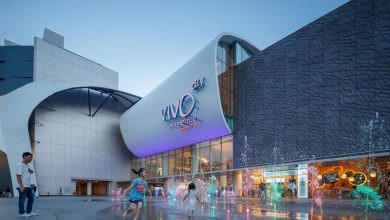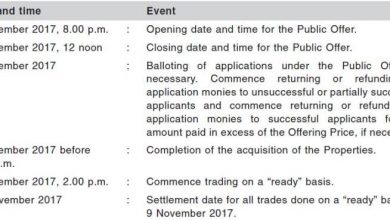Lum Chang Holdings: Building Sustainable Homes for a Better Tomorrow

Lum Chang Holdings: Building Sustainable Homes for a Better Tomorrow
When it comes to building homes, sustainability is no longer just a buzzword, but a necessity. With the growing concern for environmental issues, construction companies have a significant role to play in reducing carbon footprint and creating a better future. Lum Chang Holdings is one such company that is leading the way in building sustainable homes for a better tomorrow. In this blog post, we will explore their commitment to sustainability and how it sets them apart from others in the industry.
The Lum Chang Difference
1. Embracing Green Building Technologies
At Lum Chang Holdings, sustainability is at the core of their business approach. They actively embrace green building technologies that minimize energy consumption, waste generation, and environmental impact. From incorporating renewable energy sources to using eco-friendly materials, they leave no stone unturned in building homes that are not only aesthetically pleasing but also environmentally responsible.
2. Cutting-Edge Design and Innovation
Lum Chang Holdings is committed to staying ahead of the game when it comes to design and innovation. They constantly strive to incorporate the latest advancements in sustainable technology into their projects. By leveraging innovative solutions, they are able to create homes that are energy-efficient, well-insulated, and equipped with intelligent systems that reduce resource consumption.
Sustainability Practices
1. Energy-Efficient Solutions
Lum Chang Holdings incorporates energy-efficient measures into their projects to reduce energy consumption. These measures include the use of LED lighting, energy-efficient appliances, and smart home systems that optimize energy usage.
2. Water Conservation
Water conservation is a top priority for Lum Chang Holdings. They incorporate water-saving fixtures, such as low-flow toilets and faucets, as well as rainwater harvesting systems to reduce water wastage. By implementing these practices, they help homeowners save water and reduce their utility bills.
3. Waste Management
Minimizing waste generation is another area where Lum Chang Holdings excels. They follow strict waste management protocols, implementing recycling and waste reduction measures on their construction sites. By recycling construction materials and reducing waste sent to landfills, they contribute to a greener environment.
Frequently Asked Questions (FAQs)
Q1: What is Lum Chang Holdings’ commitment to sustainability?
A1: Lum Chang Holdings is committed to building sustainable homes by embracing green building technologies, incorporating energy-efficient solutions, practicing water conservation, and implementing waste management protocols.
Q2: How does Lum Chang Holdings incorporate renewable energy sources?
A2: Lum Chang Holdings incorporates renewable energy sources such as solar panels, wind turbines, and geothermal systems in their projects. These sources help reduce reliance on fossil fuels and contribute to a more sustainable energy mix.
Q3: Do Lum Chang’s sustainable homes cost more?
A3: Initially, sustainable homes may have a higher upfront cost due to the incorporation of green technologies. However, over time, homeowners can save on energy bills, water consumption, and maintenance costs.
Q4: Are Lum Chang’s sustainable homes certified?
A4: Yes, Lum Chang Holdings actively seeks certifications like the Green Mark Certification and LEED (Leadership in Energy and Environmental Design) to validate the sustainability of their projects.
In conclusion, Lum Chang Holdings is setting a new standard for sustainable home construction. Their commitment to embracing green building technologies, incorporating renewable energy sources, and implementing energy-efficient solutions makes them a leader in the industry. By choosing Lum Chang, homeowners can contribute to a greener future and live in homes that are not just beautiful but also environmentally responsible.
Disclaimer: The information provided in this blog post is for informational purposes only and should not be considered as financial or professional advice.



